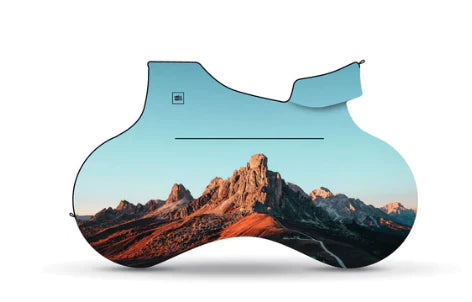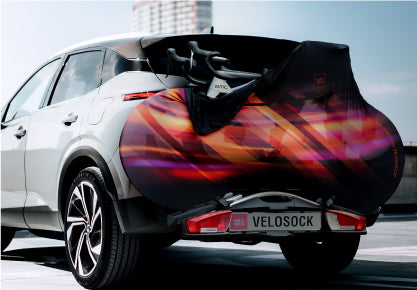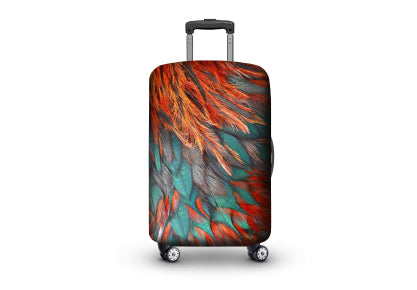What's the world's most bike-friendly city?

Want to take your bike for a ride, but the usual home-work-gym-home route seems all-too-familiar? Plan a trip to one of these top 20 bicycle-friendly cities around the globe.
Hundreds of kilometers of biking infrastructure, bike-sharing on next to every corner… These cycling mechas have it all (and more)!
1. COPENHAGEN (Denmark)

Some say that life in Copenhagen is lived in the saddle of a bicycle. With over 454 km of designated bike lanes and 1.4 million km cycled on an average weekday, there is no reason to doubt that the capital of Denmark is a cyclist paradise.
Officially named the first Bike City in the world, Copenhagen has long been famous for its biking culture. 50% of all citizens commute by bike every day, and there are more bicycles than inhabitants.
With 9 out of 10 Danes owning a bike, it’s no wonder cycling is rooted deeply in the DNA of every Copenhagener, letting this Viking city take the lead among the cycling metropolises.
2. UTRECHT (The Netherlands)

At the dawn of the day, a whopping 125 000 cyclists get up and bike their way to Utrecht center. You might think there are lots of cycling jams.
Think again.
Utrecht has recently incorporated a new traffic regulation system called Flo. It uses cute creatures to tell cyclists to speed up or slow down to catch a green light. Is this even the real life?!
To prove that Utrecht means serious cycling business, they opened the world’s biggest bike parking garage that will eventually have room for 12 500 bicycles. And it will probably not be long before those lots are all filled up, as 50% of the households in Utrecht own three bikes or more.
3. AMSTERDAM (The Netherlands)

If you haven’t cycled in Amsterdam, you have not been in Amsterdam. A phrase that rings true to those who have at least once visited the modern cycling nirvana.
There
Approximately 38% of all trips in Amsterdam are made by bike. With a percentage as high as this, it is a true wonder how this city and the Netherlands still manage to have one of the lowest rates of serious cycling accidents in the world.
4. STRASBOURG (France)

It’s no surprise that the country who gave us Tour de France and legendary cyclists such as Bernard Hinault and Jacque Anquetil appears quite often in this list.
France’s no. 1 most bike-friendly city is Strasbourg, with a network of over 560 km of cycling trails. This city loves biking so much that it even has an annual festival - La Fête du Vélo, celebrating cycling for the last 20 years.
A large part of the old city center is a car-free zone, which makes it extra safe to cycle or walk. Combine this with the ecological Vélhop bike sharing service, and you’ve got the perfect cycling destination.
5. MALMÖ (Sweden)

Sweden’s 3rd largest city Malmö is located in the southern region of Skåne, which luckily for cyclists
Bike lane distance in Malmö
Malmö is a sweet spot for nature lovers, as there
6. BORDEAUX (France)

Don’t let the busy traffic of Bordeaux center fool you! This city offers glorious countryside and quiet roads, and you’ve got avast choice of marked cycle routes and paths.
The city focuses on building a soft urban transportation system, including a significant development of the cycling network. As a result, greater Bordeaux now boasts more than 643 km of bicycle paths.
Bordeaux is an excellent place for adventurers. The city is crossed
Oh, and… wine. Bordeaux is one of the
7. ANTWERP (Belgium)

With traditional and professional cycling
The city is the starting point of the LF51 - a 220 km long cycling route that takes you from Antwerp to the Zeebrugge at the Belgian Coast.
For additional exploration, you’ve
8. LJUBLJANA (Slovenia)

The capital of Slovenia might not be your typical choice of cycling destination. But it should be.
In Ljubljana, there
Ljubljana’s self-service rental system BicikeLJ is also worth checking out. Since its introduction in 2011, it’s become super popular, with over 4,6 million rides in this system alone.
With a cycling environment as friendly as Ljubljana’s, it’s no wonder why 12% of the inhabitants opt for bikes as the best means of transportation.
9. TOKYO (Japan)

Only 10 km of cycling lanes. Poor enforcement regarding cycling laws. If most of the biking in Tokyo happens on sidewalks, just how did the city make this list?
The success behind cycling in Tokyo lies not in the infrastructure or a thorough urban planning policy.
A recent documentary - The
In total, about 14% of all trips in Tokyo are made by bicycle. Imagine the percentage when Tokyo starts investing in bike paths?
10. BERLIN (Germany)

Approximately 25% of
But as a cycling city, Berlin is far from perfect. The roads are clogged, and many bike lanes are created by simply painting a line, offering no protection.
The situation is supposed to improve immensely in the years to come. The city administration plans to build at least 100 km of cycle superhighways across the city and create 100 000 new bike parking spots by 2025. If these changes take place, Berlin might easily turn into a one-of-a-kind cyclist’s utopia.
11. BARCELONA (Spain)

The Catalan pearl has officially been recognized
Furthermore, Barcelona’s bike-hire scheme, Bicing, is one of the best in the world with 100 million bike journeys and counting.
But Barcelona doesn’t intend to stop there. The city’s officials are in the midst of a revolution and have pledged
With such a mindset, there’s no doubt that this Spanish city is a top choice for the two-wheeled traveler.
12. VIENNA (Austria)

For a while now, Vienna has been slowly paving its way among the cycling capitals of the world. There
Numerous bike sharing stations allow you to rent a bike any time and go cycling in Vienna. Many of Vienna’s most interesting spots can easily be reached by bike.
13. PARIS (France)

Cycling in Paris may appear daunting at first because of the heavy traffic. But it is the cheaper, healthier, and far more convenient way to hit the busy streets.
The city has a very friendly bike sharing system called Vélib' Métropole with more than 23 600 bikes and 1800 stations spaced every 300 meters across the capital.
And Paris is still moving forward. The city’s bicycle plan has declared that 15% of city’s inhabitants will be cycling by 2020. But will Paris become the world’s most bikeable city
14. SEVILLE (Spain)

Despite the fact that Spain remains far from the perfect environment for cyclists, Seville has transformed itself quite impressively in the last several years. And it seems that all it took to encourage the cyclists
Seville now has 120 km of segregated bike lanes, as well as a municipal bike hire scheme called SEVici, with 2500 bikes and 250 docking stations.
The number of bike trips has multiplied 11-fold in just a few years - from a little over 6000 to more than 70 000. If this is how Seville rolls, the number of people cycling in the
15. MUNICH (Germany)

In Munich, cycling is a part of the daily life for many people. The cycling modal share here is 17%, and cycle
Munich is full
The Bavarian city uses the bicycle as a primary tool to improve the urban life. It has
16. NANTES (France)

Home to Jules Verne, Nantes is the natural habitat for new bike shops and startups working on smart bikes and accessories.
The modal share is at 6%, and the city
There is a strong community of cycling citizens in Nantes. And let’s just say - if Verne could yet
17. HAMBURG (Germany)

Hamburg had more than 1700 km of cycle paths in 2006 already.
And while Hamburg has improved its cycling infrastructure in the last couple of decades, lately the
Still, you’ll find Germany’s most successful bike share program in Hamburg. It’s called StadtRAD Hamburg, and it boasts 216 000 users, 129 stations, and 1650 bikes all over the city.
Oh, and many residential neighborhoods are filled with cyclists and bicycles, giving the impression of being in Amsterdam or Copenhagen.
18. HELSINKI (Finland)

Finland can be proud not only of its unique Nordic design traditions but of its cycling-friendly capital, too.
Helsinki has 1200 km of cycling routes, 730 km of them are paved. The Finns even turned an old railway
In the upcoming years, the city plans to open new high-quality cycle paths and improve cycle parking. The modal share is planned to be increased to 15% by 2020. But with commitment such as that in Helsinki, this goal might easily be reached sooner than planned.
19. OSLO (Norway)

Even though it’s hilly and it has winters, Oslo is still full of enthusiasm - and lots of policy changes - to become as much of a bike-friendly city as it can.
Oslo was
For example, private cars will be banned from the city center by 2019. Also, car
Oslo
20. MONTREAL (Canada)

As the sole North American representative, Montreal has taken the lead in the continent for a couple of decades.
The city offers more than 640 km of cycle lanes and a self-serve bike rental system with 5000 Bixi bikes. On a typical day in Montreal, cyclists are everywhere.
But on the Tour de L’Île, there are thousands. This annual mass ride takes place in the streets of the city. And that day - the traffic is closed for vehicles.
The people of Montreal know how to celebrate the city’s bike culture. And with Montreal’s cycling network constantly evolving, we’ll gladly join the party.

So there you have it. Congratulations if your city made the list! But for those who didn’t - well, there’s still room for improvement.
The ranking is done by the Copenhagenize Design Company’s Index of the most bike-friendly cities in the world, taking into consideration factors such as bicycle culture, infrastructure, the perception of safety, politics, and social acceptance.





























Leave a comment